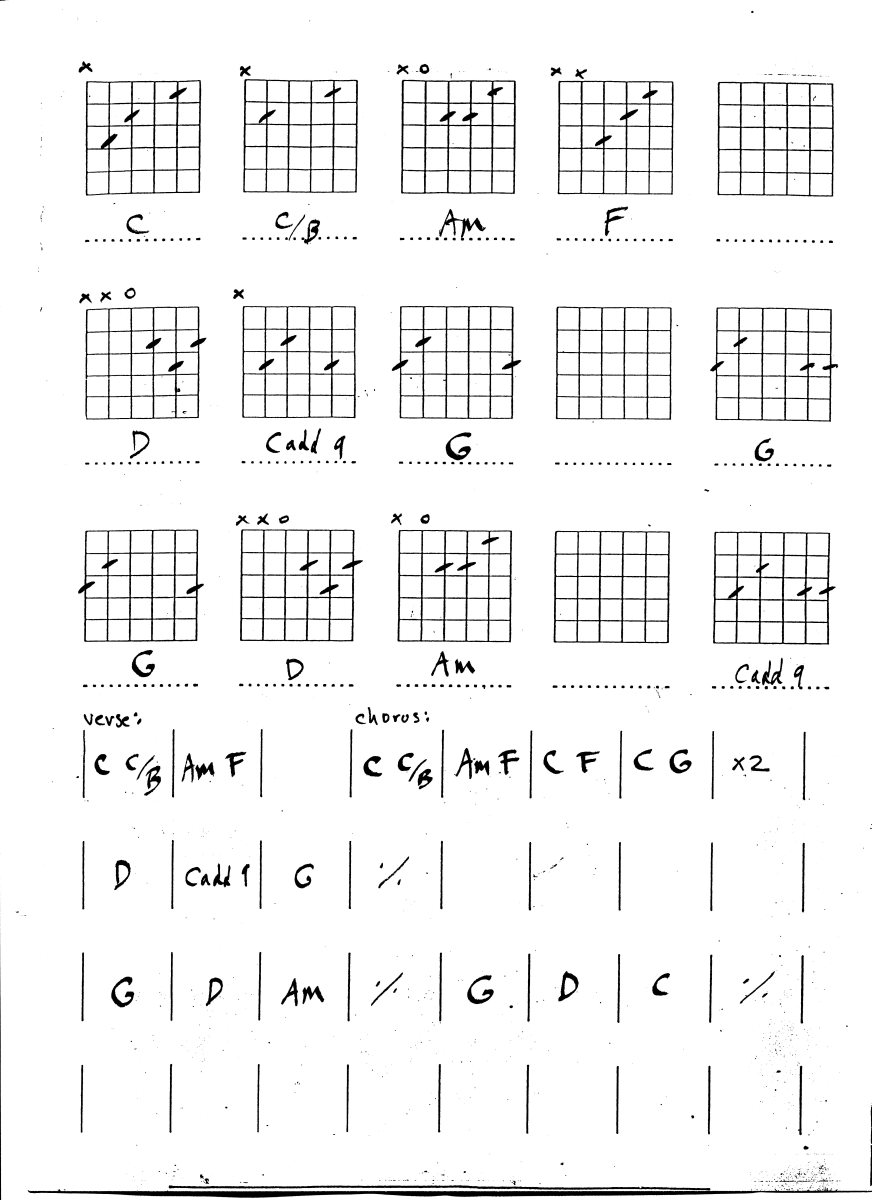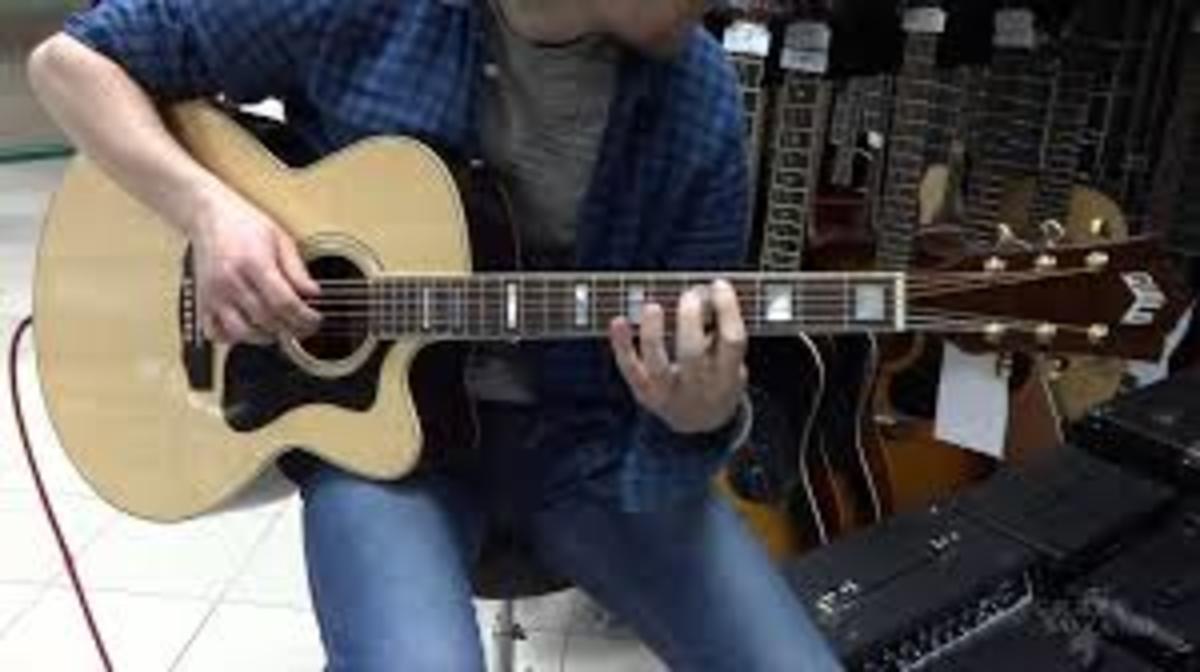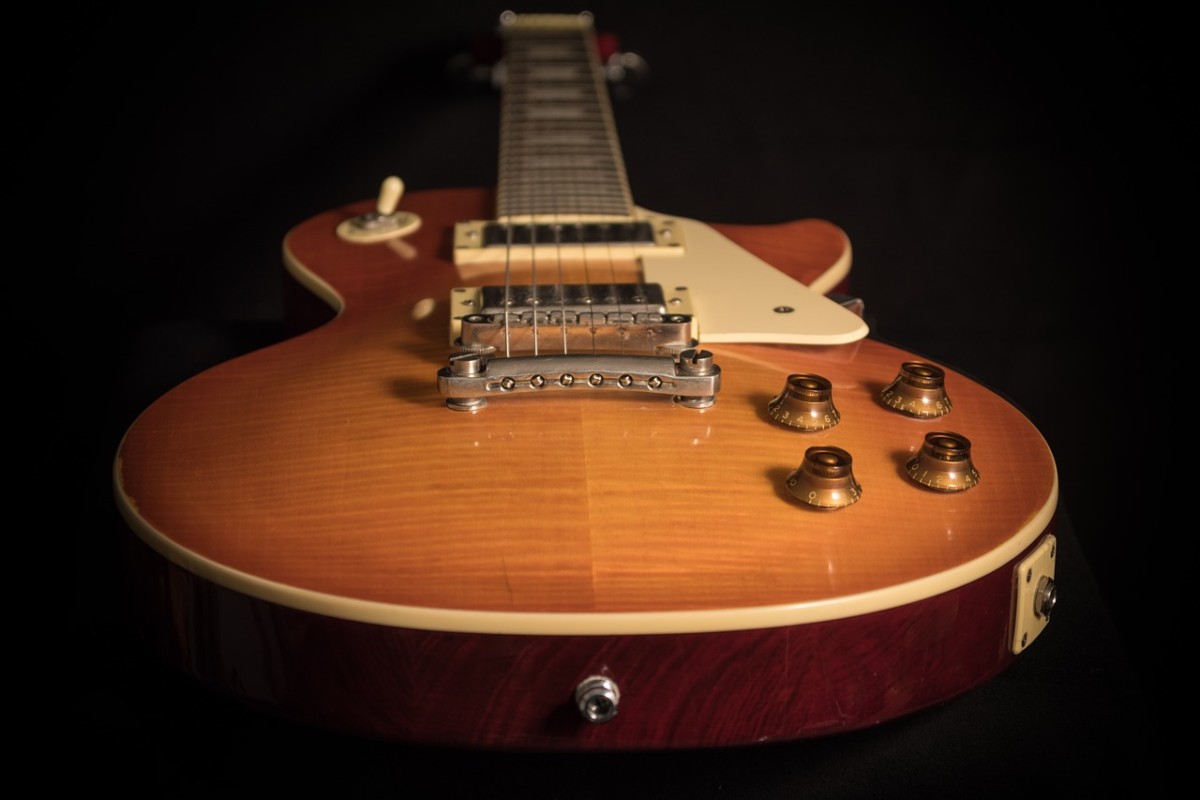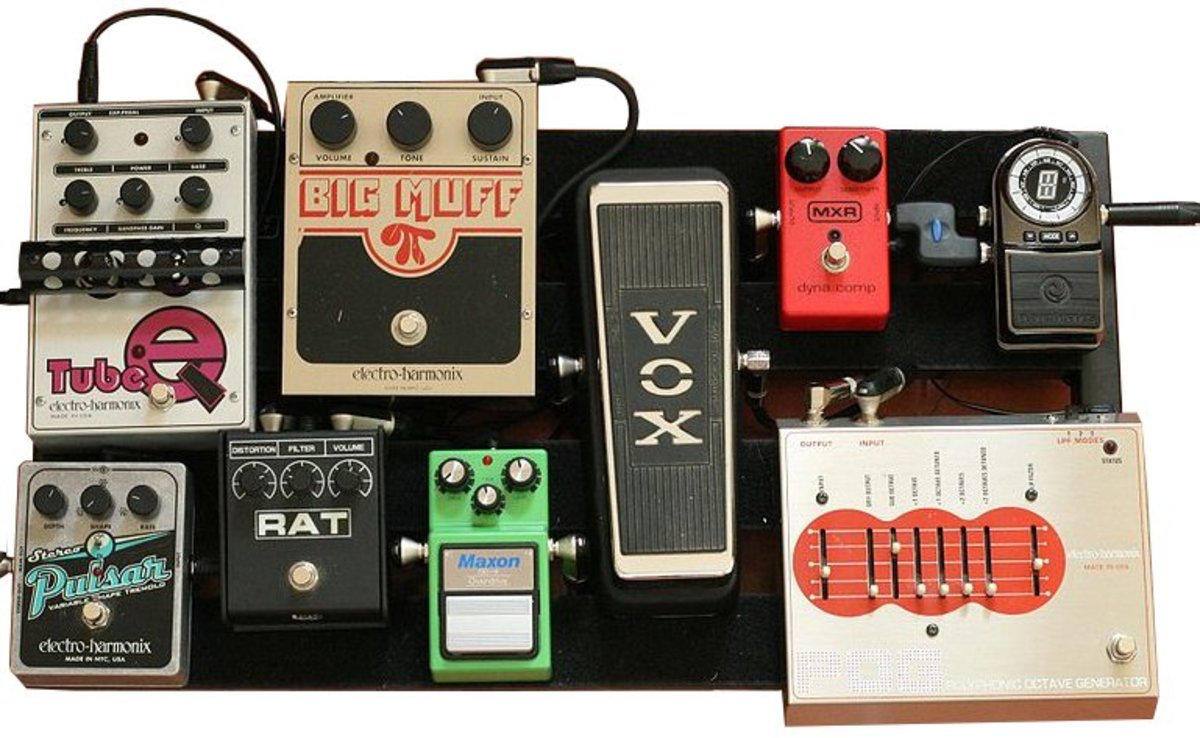Five Acoustic Guitar Songs That Use a Capo

I remember a while back when I had not been playing guitar for very long, I was looking up tabs for songs I wanted to learn. Many times what I was trying to play just didn’t sound right. I would check if I was in the right tuning and even after confirming, everything sounded wrong. Some time later, I gave some of those songs another shot and I slapped myself in the face when I saw that each of those tabs had Capo on the nth fret in nice, big bold letters at the top. In my defense, I didn’t know what a capo was in my early, naïve years as a guitarist.
Even if you have not heard the word capo, I’m sure you’ve seen one somewhere. It is a clip that is applied to a selected fret in a bar position, pressing each string down firmly. So say you are in standard tuning and then put a capo onto the 7th fret; essentially what you have done is tuned your guitar up four steps (B F# D A E B). From there, you can play using similar chord shapes and scales, relative to the 7th fret. When reading tabs for songs that use a capo, some authors will simply address the frets as they are without the capo, while others will address them how they are relative to where the capo is. For example: if the capo was on the 7th fret, the 8th fret would become the 1st, and so on.
Choosing a Capo
It’s important to know that there is a large variety of capos available out there. For example, a 12-string guitar will require a capo with more tension than that of a traditional 6-string. It’s the same thing between a nylon string guitar and a steel-string guitar: one capo will work great, while the other not so much. Too much tension could damage the neck and/or cause the strings to sound out of tune. Not enough tension will result in a dull, slightly muted tone. String gauge should also be considered in your decision. If you’re really not sure on what capo you need, I would suggest heading to a music store and just asking one of the experts what they recommend for your specific guitar and string gauge preference.
If you don’t have the funds yet, or for some reason can’t get to a music store, there is a cheap alternative available in the meantime. All you need is a pencil – preferably one that has flat edges – and a couple of rubber bands. Position the pencil over the fret you want to bar down and stretch a rubber band from top to bottom so it stays in place. Repeat this with as many rubber bands it takes for the strings to sound clean, with no buzzing.
Makeshift Capo
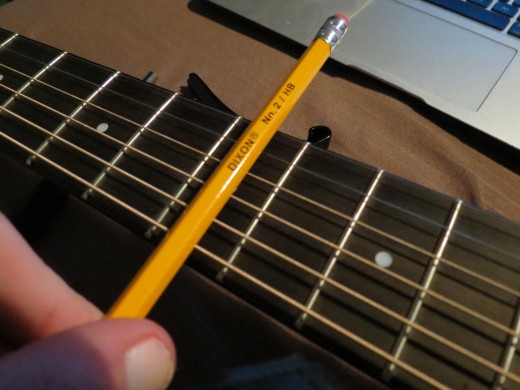
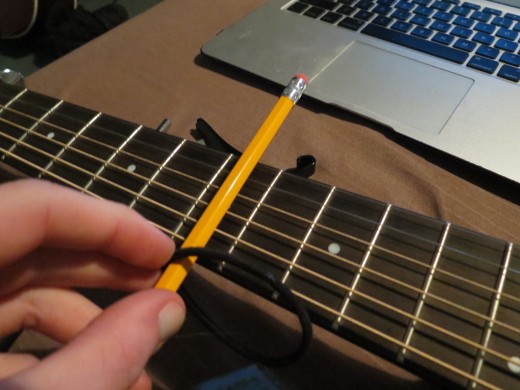

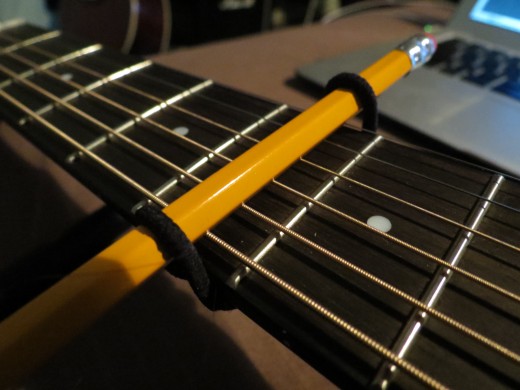
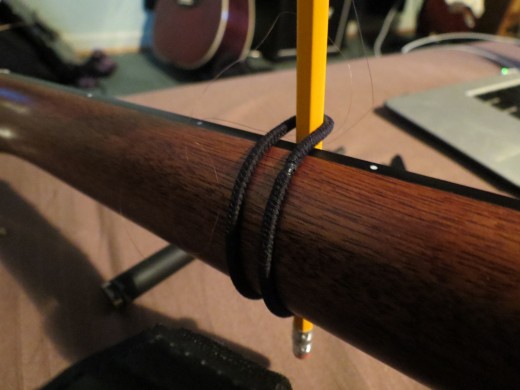
Just like down tuning, applying a capo to your guitar will open you to a much larger selection of songs and musical styles that you can play. So, for that purpose, I have listed some essential songs for learning to play with a capo:
Jethro Tull - Cheap Day Return
Capo on the 7th fret
This one of the Tull’s hidden gems and primarily an acoustic piece. Of course there is some beautiful flute and vocal work contributed by Ian Anderson, but what really drew me to this song was the guitar work. There are two guitar parts, both played with a capo on the 7th fret. One strums along the chord progression, while the other plays small melodies between the verses. The song is very easy to play and very short too – I always finish the song wishing there was more too it. But, on the upside, that just means you can play it over and over. Trust me, once you get the hang of this song, you will not want to stop playing it.
The Beatles - Here Comes the Sun
Capo on the 7th fret
This is a song that will always put a smile on your face, so why not learn how to play it? Just like “Cheap Day Return,” this Beatles classic uses a capo on the 7th fret and is a very easy song to play.
The Eagles - Hotel California
Capo on 7th fret
See a pattern yet? I’m not sure why, but a lot of artists love the capo at the 7th fret. The Eagles are no exception. That main, iconic riff that you hear – in the intro, verses and solo section – is played on a 12-string acoustic with a capo placed on the 7th fret.
Simon and Garfunkel - Sound of Silence
Capo on the 6th fret
Aside from the intro, which consists of ringing notes, the majority of this song is done with chord and strumming work. A good one to practice singing and playing at the same time for sure.
Harry Chapin - Cats in the Cradle
Capo on the 1st/8th fret
I classified this as using a capo on the 1st/8th fret, because I have seen two arrangements of the song: one that uses a capo on the 1st fret and another that uses the 8th fret. Chapin himself used the capo on the 8th fret, but it seems like some people find it easier to play with the capo on the 1st fret – perhaps because the strings are a bit looser at that position.
Closing Words
I listed these songs here because I feel that they will help you get a feel for playing with a capo. I’m not suggesting that playing with a capo is necessarily more difficult than playing without one. However, you will notice that the strings feel tighter the higher up the capo is positioned, which could take some getting used to. That, and playing familiar chord shapes higher up on the fret board could be a bit awkward at first.
Along with these songs, you can also practice by playing songs that you already know at different capo positions. This will allow you to get used to the different string tensions and constricted chord positions. It’s also interesting to see how different certain melodies sound at higher registers. Also, experiment with different tunings combined with different capo positions. The possibilities are endless.

